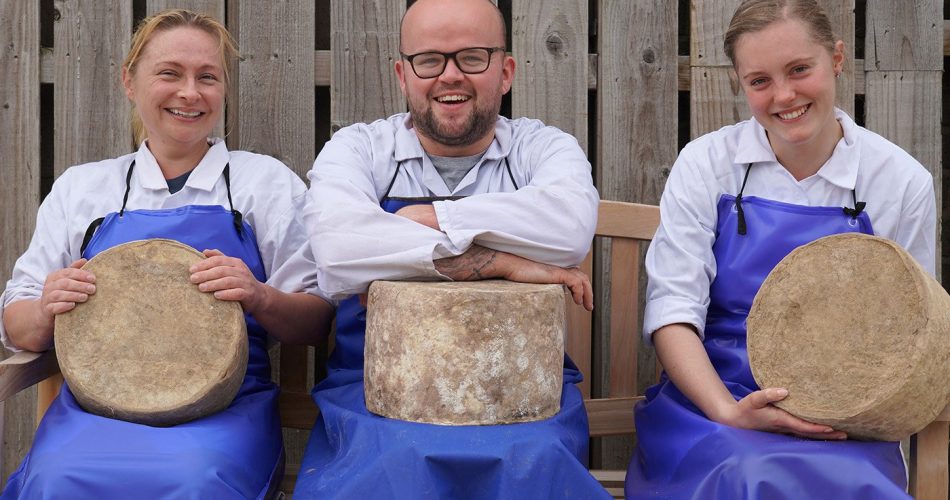Discover the Art of Floridia Cheese: A Guide to Cheese Makers Melbourne
Discover the Art of Floridia Cheese: A Guide to Cheese Makers Melbourne
Blog Article
Opening the Keys of Artisanal Cheese Making: A Step-by-Step DIY Overview
In the world of culinary workmanship, artisanal cheese making stands as a testimony to the delicate balance in between practice and development. Each action in the process, from choosing the appropriate milk to refining aging methods, holds within it a wide range of expertise gave with generations. As we start this trip to demystify the art of developing elegant cheeses, we are encountered with a tapestry of secrets and abilities waiting to be unwinded. Join us as we discover the complexities of this old craft, where science, persistence, and art converge to generate tastes that entice the senses.
Selecting the Right Milk
When getting started on the trip of artisanal cheese making, the selection of milk plays a critical duty in figuring out the high quality and attributes of the end product. The type of milk chosen affects the taste, appearance, and in general account of celebrity. Raw milk, straight from the pet, is liked by numerous artisanal cheesemakers as a result of its special blend of enzymes, microorganisms, and taste compounds. However, utilizing raw milk features regulations and threats, making pasteurized milk a more secure option for beginners.
Additionally, the resource of the milk, whether from cows, goats, sheep, or buffalo, contributes distinctive tastes and qualities to the cheese. Each type of milk brings its own subtleties, enabling for a broad range of cheese ranges to be crafted based on the picked milk.
Culturing and Coagulating
To initiate the cheese-making procedure, the important steps of culturing and coagulating have to be very carefully carried out to transform milk right into curds and whey. Culturing involves introducing beneficial germs to the milk, which then begins the fermentation process. These bacteria convert lactose (milk sugar) into lactic acid, creating the acidic environment needed for coagulation. The sort of culture utilized can significantly impact the taste, structure, and ripening of the last cheese item.

The timing and temperature level control during culturing and coagulation are vital factors that influence the last end result of celebrity. Correct execution of these steps is important to make certain the wanted texture, taste, and consistency of the artisanal cheese being generated.
Draining and Pressing Curds
After the milk healthy proteins have actually coagulated and the curds have been cut to launch whey, the following important step in artisanal cheese making includes draining pipes and pushing the curds to attain the wanted texture and consistency of the last cheese item. Draining pipes is the process of separating the curds from the whey. This can be done by transferring the curds right into a cheesecloth-lined bowl-shaped sieve or mold and allowing the whey to drain pipes off naturally. The time for draining pipes can vary depending on the sort of cheese being made and the preferred dampness material.
Pushing helps eliminate any remaining whey and compacts the curds to develop a strong cheese wheel. Appropriate pressing and draining pipes are vital actions that dramatically affect the top quality and characteristics of the artisanal cheese being created.
Aging and Flavor Methods
Executing thorough aging and flavoring strategies is critical in boosting Check This Out the depth and complexity of artisanal cheeses, boosting their taste accounts to splendid degrees of refinement and class. Aging plays an essential function in creating the distinct tastes and appearances that differentiate artisanal cheeses.
Flavoring strategies also contribute substantially to the last taste of artisanal cheeses. Cheesemakers may select to present added flavors by integrating components such as natural herbs, seasonings, and even fruits into the cheese during check it out the manufacturing process. Additionally, some cheeses are washed or scrubed with various liquids, such as brine or alcohol, to enhance their structures and flavors.
Covering and Saving Cheeses

Conclusion
In verdict, mastering the art of artisanal cheese making involves thoroughly choosing the appropriate milk, adhering to precise culturing and coagulating processes, draining pipes and pressing curds efficiently, and using different aging and flavoring methods. Keep in mind to cover and save your cheeses effectively to ensure optimal taste and texture growth.
Each type of milk brings its own subtleties, allowing for a wide variety of cheese ranges to be crafted based on the picked milk.After the milk healthy proteins have coagulated and the curds have been reduced to launch whey, the next vital action in artisanal cheese making includes draining and pushing the curds to attain the wanted appearance and uniformity of the last cheese product. The majority of cheeses need to be covered in wax paper or cheese paper to allow them to take a breath while safeguarding them from drying out. For cheeses that need to proceed aging, such as bloomy rinds or washed peels, ensure they are saved in an amazing environment like a cheese cavern or a fridge established to the proper temperature. By paying interest to the covering and storage of artisanal cheeses, cheese manufacturers and fanatics can preserve the honesty of these delicacies and totally appreciate their complicated flavors.
Report this page